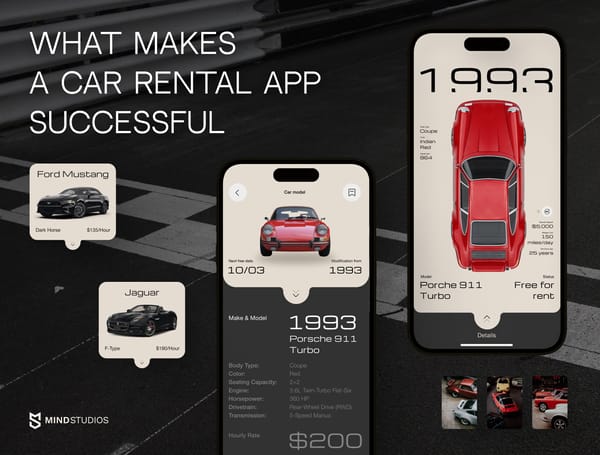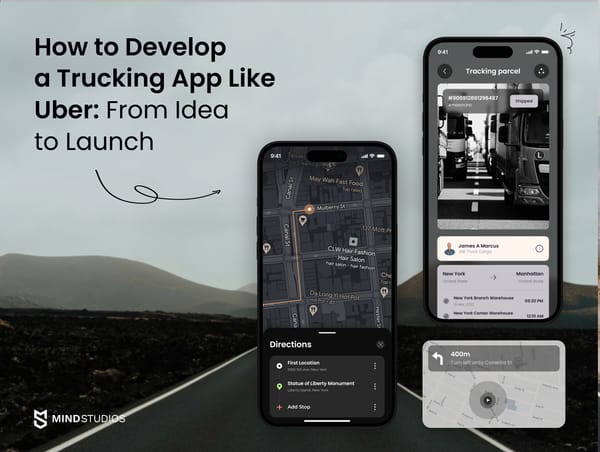This article will answer the question of how to choose a payment service provider, as well as provide our practical advice on this matter.
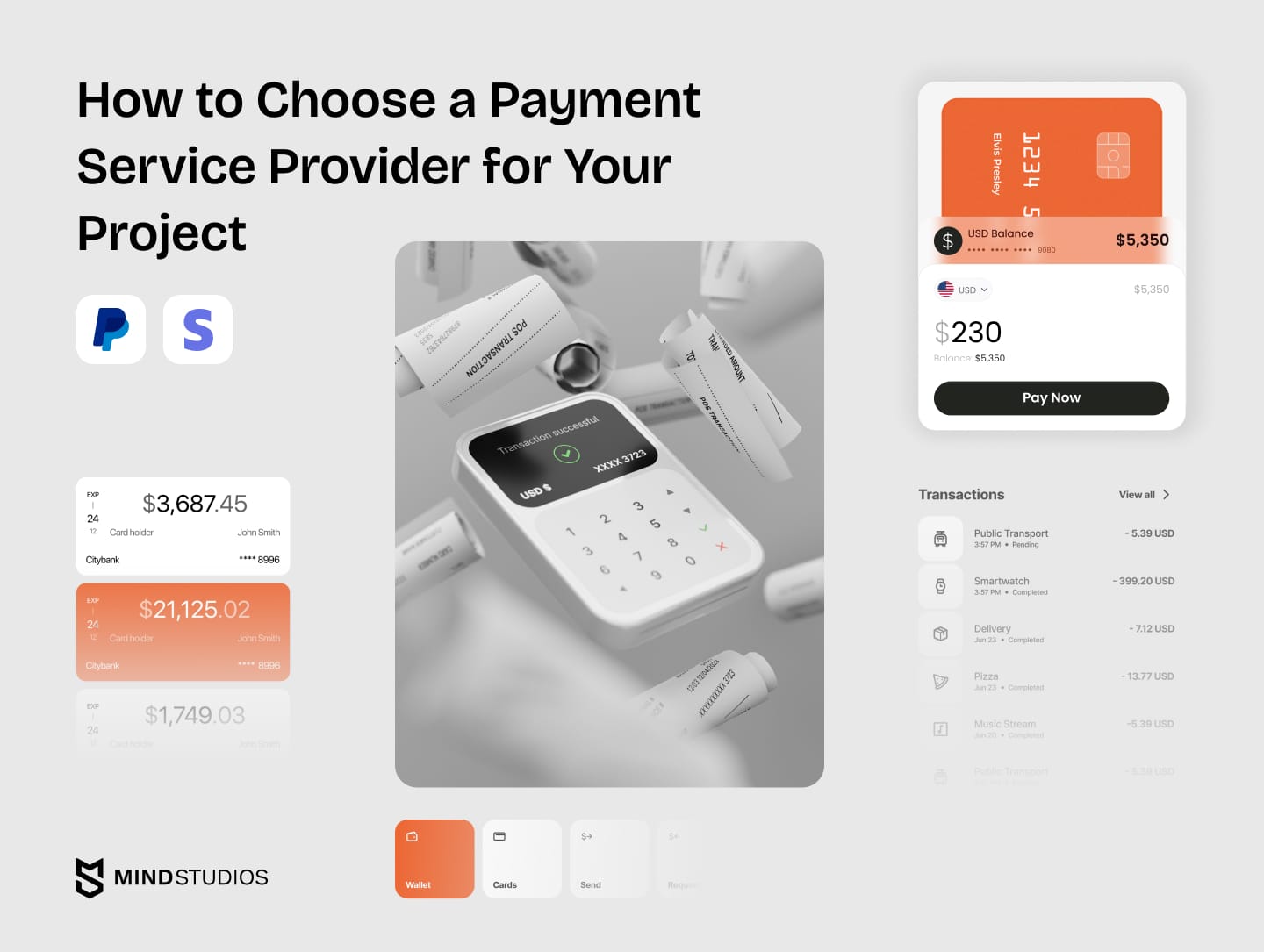
Highlights
- PayPal and Stripe are dominant PSPs today, with PayPal holding 45% of the market share.
- PayPal offers global coverage, while Stripe is popular for its credit card integration.
- Choosing the right PSP requires considering such factors as fees, currencies, and recurring billing support.
Choosing a PSP service provider can give headaches to any business owner, including high fees, regional restrictions, limited currency support, security issues, or others. After all, it is a decision that directly impacts user experience and shapes your revenue streams.
At Mind Studios, we choose the most fitting and effective payment solution for both businesses and their users.
- Pampr, our luxury delivery solution, helps companies manage their fleet, making Stripe a natural fit for it.
- James Butler, our food delivery app, also benefited from Stripe’s support for credit card payments.
- For Unight, a Chinese nightlife even app, we integrated Alipay to align with regional payment preferences.
- And a Stripe-PayPal combo was used for Envol, our holistic healing assistance.
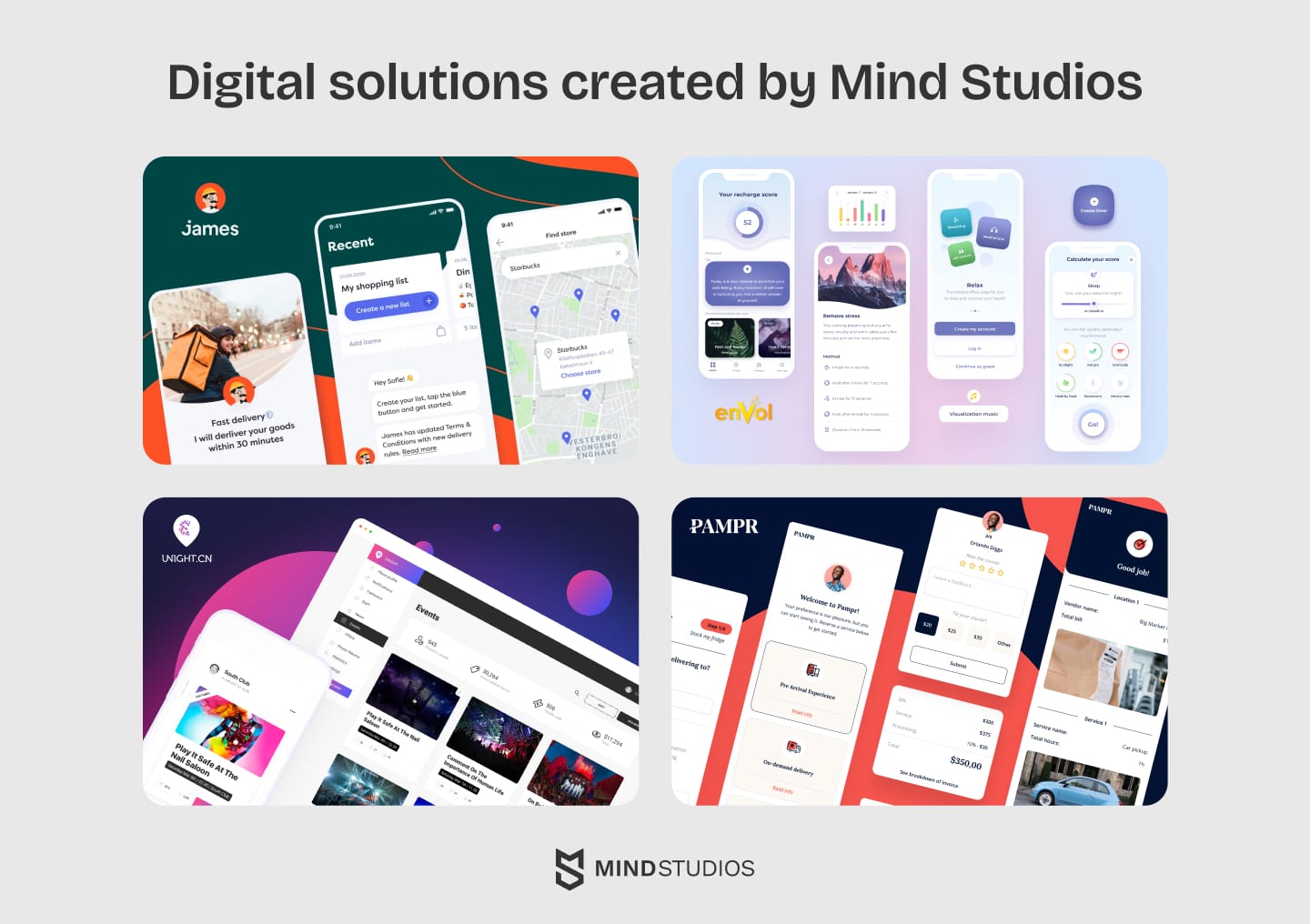
If you are looking for the optimal PSP for your business and a smooth and hassle-free integration, our tech team is here to make it happen.
What is PSP?
In simple terms, a payment service provider (PSP) offers online services for online businesses to accept electronic payments through a variety of payment methods. This includes credit card and bank-based payments, such as direct debit, bank transfer, and real-time bank transfer based on online banking. Typically, they use a software-as-a-service model (or SaaS) and form a single payment gateway to support multiple payment methods for their merchant clients.
Now that we clarified how PSP works, the vital question is “How to select a payment service provider?”
How to choose a payment service provider
Choosing the right payment gateway for your enterprise is an important task, but it could be confusing. There are so many things to consider, such as fees, recurring billing, and even currency support.
At Mind Studios, we’ve done numerous PSP integrations, and here is what Dmytro Dobrytskyi, CEO of Mind Studios, has to say on how to select an optimal fit:
When choosing a PSP, we always prioritize providers that align with the audience’s payment habits plus ensure compatibility with existing systems. Also, we focus on scalability, competitive fee structure, and advanced fraud protection. Our main goal is to find a balance between user convenience and operational effectiveness.
To start, we always recommend that our clients give answers to the following questions:
Target market and regional compatibility
Questions to ask yourself |
Why it is important |
|---|---|
|
This is important, because some payment service providers may not work in specific countries, so it may limit your customer base and hurt your revenue potential. If your target audience is located in the region unsupported by your PSP, the users may face difficulties completing purchases. |
Integration specifications
Questions to ask yourself |
Why it is important |
|---|---|
|
If you want to integrate PSP into a mobile app, don’t forget to check if selling products in the way you want conforms to the guidelines from Apple or Google (some of them require you to only use their in-app purchase API). For example, if you’re going to sell content or digital goods which will be used within an app, then you must use the in-app purchase. Non-compliance may result in app rejection. |
Payment method and billing type
Questions to ask yourself |
Why it is important |
|---|---|
|
Offering the right payment method and billing type is crucial for meeting your customer preferences and boosting conversion rates. Plus, if you fail to support popular local payment methods or currencies, it can lead to alienating international customers as well as limiting your reach to the key markets. |
Customer experience and business risks
Questions to ask yourself |
Why it is important |
|---|---|
|
Customer experience is key in the payment process. So, if you allow them to enter their details directly, they will have a more seamless checkout experience. However, it requires robust security measures for protection of sensitive data. Businesses in high-risk industries (like online gambling or gaming, eCommerce, travel/ticketing services, among others) face more challenges, including higher fees and stricter compliance requirements. In this case, you have to choose a PSP that focuses on fraud prevention, chargebacks, and refund policies. |
If you handle these factors carefully, you will be able to make an informed decision that meets your business goals and improves customer experience.
Choosing the right payment service provider for your industry
Different industries have unique requirements when it comes to payment processing. Thus, choosing the right provider that meets your industry-specific needs will guarantee smoother transactions as well as higher customer satisfaction. Here are our recommendations for the most common industries and digital solutions within them:
Industry |
Examples of solutions |
What to consider |
PSPs we recommend |
|---|---|---|---|
Real estate |
Apps and platforms for property management and rental, etc. |
|
PayPal, Stripe, Braintree |
Logistics |
Freight management platforms, delivery apps, etc. |
|
Stripe, SecurePay |
eCommerce |
Online shops, marketplace platforms, etc. |
|
Klarna, AfterPay, PayPal, Stripe |
On-demand services |
Food delivery apps, home services booking apps, ride-hailing apps, etc. |
|
Stipe, Payoneer |
Healthcare |
Telemedicine platforms, patient management systems, etc. |
|
PayPal, Braintree |
Fitness & wellness |
Gym membership apps, fitness tracking apps, wellness subscription apps, etc. |
|
Stripe, Square |
Gaming |
In-game shops, gaming subscription services, multiplayer platforms, etc. |
|
Stripe, PayPal, Xsolla |
If you are looking for expert guidance on choosing a payment service provider, contact us today.
Best payment service providers in 2025
Based on our experience, among the many options available, the most popular and efficient payment service providers are PayPal and Stripe. Each has its advantages and disadvantages.
PayPal vs. Stripe: Which is better?
Aspect |
PayPal |
Stripe |
|---|---|---|
Global coverage |
Operates almost everywhere globally (See the limitations here) |
Widely available, but in fewer regions than PayPal |
Preferred use cases |
Optimal for customers who prefer PayPal accounts |
Best for direct credit card payments |
Credit card payments |
Supported, but they are less integrated and have worse user experience compared to Stripe |
Fully optimized for credit card payments |
Integrations |
Has a wide range of pre-built solutions but is less developer-friendly |
Very developer-friendly with user-friendly APIs |
User experience |
Simple, may feel outdated for some users |
Modern and intuitive |
Fraud prevention |
Strong security measures |
Strong security measures |
Best fit for |
Customers who prefer PayPal balance/off-site payments |
Customers who prefer card payments |
Need a consultation on which one will fit you better? Contact our tech team and we will guide you on the selection process.
PayPal is a big player
First, take a look at the market share, according to Statista.
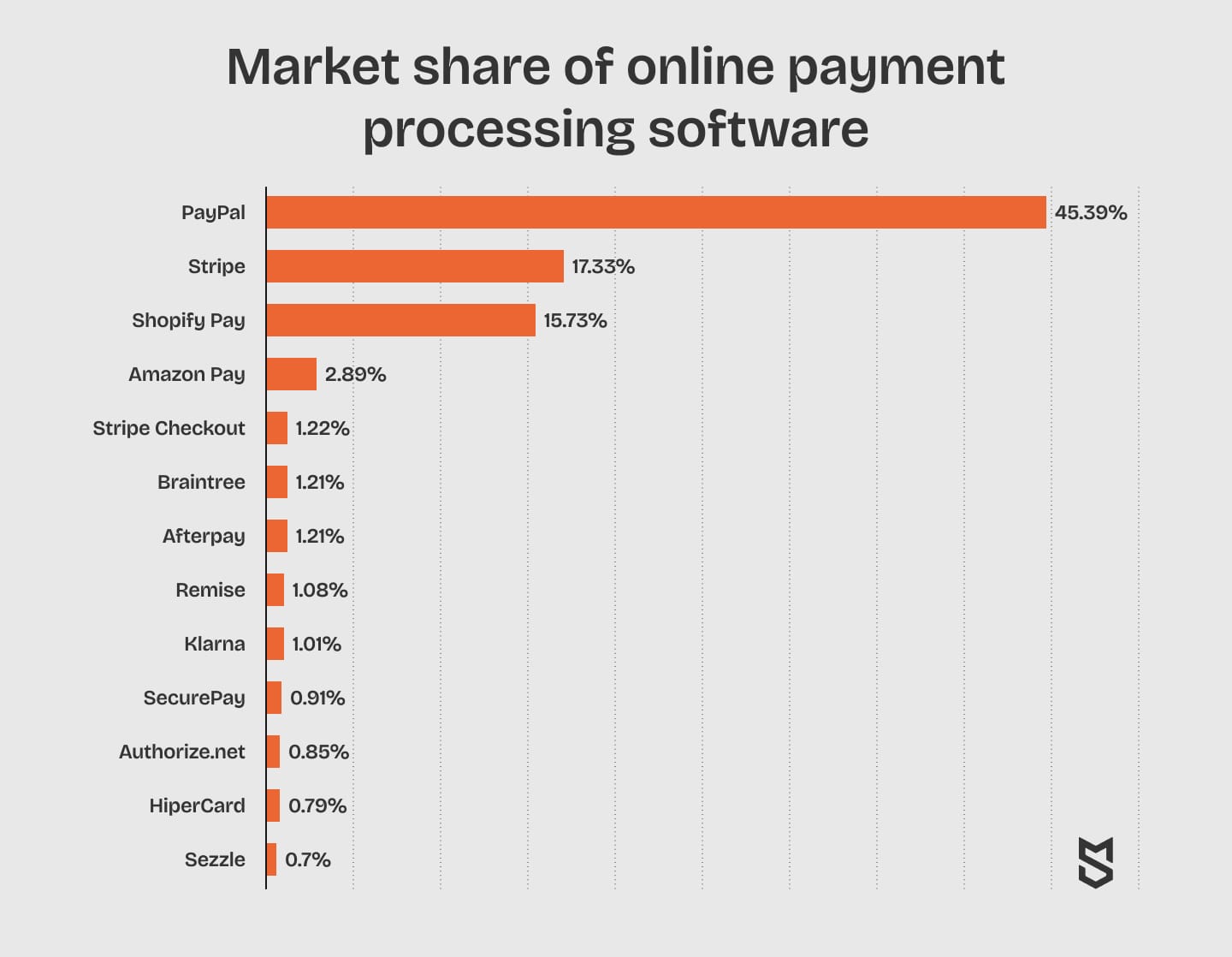
As you can see, PayPal is the leader. That’s why it’s better to support it by default. Here are some of its strengths:
- It’s good when you don’t need to keep your users on your website or in your app to make a checkout.
- PayPal provides lots of ready-made solutions for different types of integrations, for example, PayPal Express Checkout, PayPal Button, PayPal Here, etc.
- PayPal is a large and powerful company. They can solve every issue and dispute. Here at Mind Studios, we are really thankful to PayPal for preventing, investigating and solving activities such as fraud, unauthorized access, refunds, etc. You will always be able to rely on them and their corporate machine.
Stripe. Stripe. Stripe.
Stripe now has a market share of 21%, making it the world’s second-most-used payment solution. What’s more, it surpassed $1 trillion in total payment volume (TVP) 10 years faster than PayPal (for the record, it took 23 years for PayPal to achieve this milestone.) Why is this? PayPal suffers from scale, age, and bureaucracy. Meanwhile, Stripe, with its improved technology and much easier integration, is conquering market share.
Believe it or not, Stripe was initially created by developers for developers. These guys simply solved the most common issues that every developer has:
- Stripe has a Customer first approach: They provide open channels for email support, they even have an IRC channel (#stripe on Freenode) where developers can communicate with real engineers and get live help from them.
- Having the ability to make credit card data portable is a great feature from a business perspective. If you decide to leave Stripe, they help you migrate the credit card data in a secure and PCI-compliant way. And your existing customers do not have to sign up again, so there is no chance of losing them.
- All PayPal users often have issues with its Dashboard and interface. It is slow and not very user-friendly, so it’s always a challenge to perform simple functions like a transaction refund. Stripe has a really powerful dashboard and fast interface. It clearly shows bank transfers and HTTP request logs.
- With Stripe, you won’t spend time configuring Sandbox environments, its test mode is much easier.
Mind Studios’ insight: Sometimes opting for the combo of PayPal and Stripe is the best option when choosing a PSP service provider. Just like we did in our Envol project — using PayPal was beneficial for PayPal users, and Stripe for credit card transactions. This allowed us to get a broad coverage and optimize user experience, which led to increased payment conversion rates for the app.
Which payment service provider is better?
While PayPal and Stripe are undoubtedly two industry leaders, there are few other options in the market of payment service providers that cater to specific businesses and offer unique advantages. Here are just a few of them:
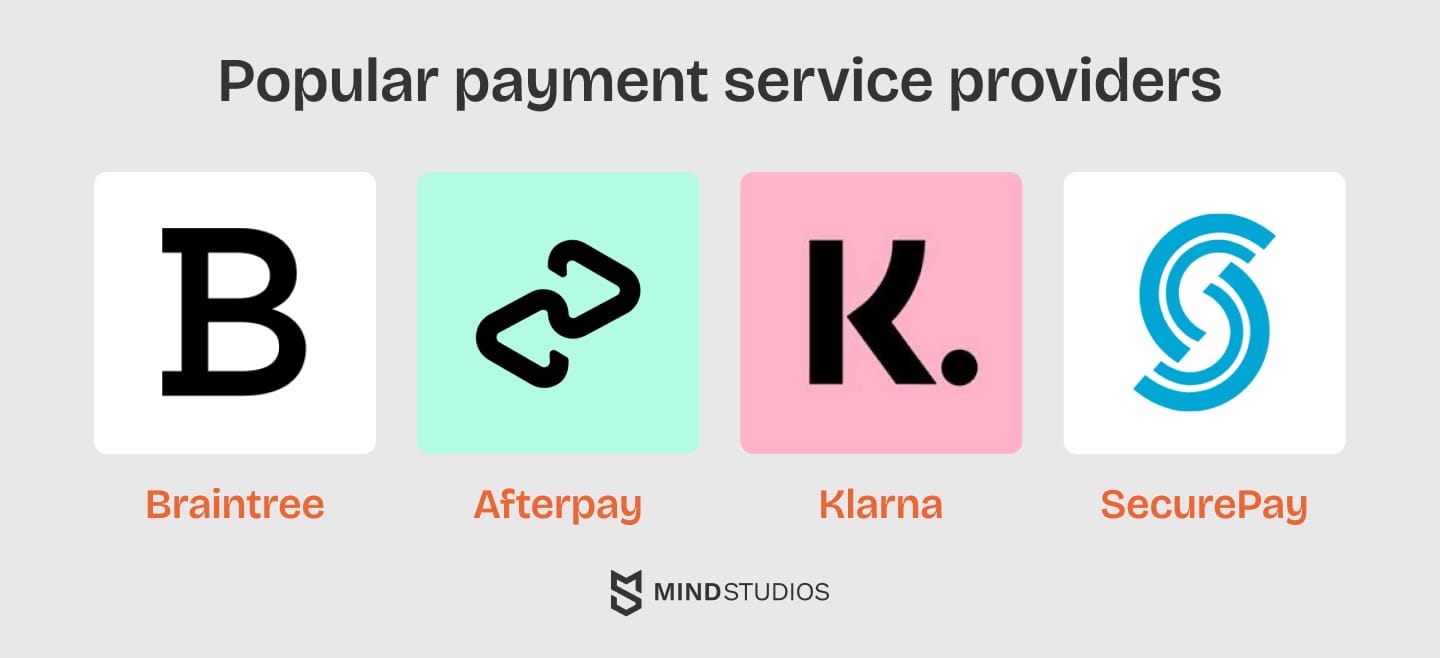
Braintree
Owned by PayPal, Braintree offers support of various payment methods and integrations, including Apple Pay and Venmo. It also has robust fraud protection features and scalability, making it an optimal choice for growing businesses that seek flexibility and security.
Afterpay
This is an ideal solution for businesses that target customers who prefer "buy now, pay later" options. It is particularly popular among businesses operating in retail and eCommerce that want to boost sales thanks to flexible installment payment plans.
Klarna
Similar to Afterpay, this payment solution provides flexible payment options that are widely used in eCommerce. Plus, it helps improve cart conversions through improved customer experience.
SecurePay
Primarily built for Australian businesses, this PSP offers secure online payment processing with robust fraud management tools. It is very popular for recurring billing and multi-currency transactions.
Mind Studios’ tip: We want to mention that in terms of choosing a PSP service provider, there is no one-size-fits-all solution. That is why the first thing you should do is understand your business needs, and then choose the right solution for you, be it a flexible payment option, scalable solution, regional solution, or something else.
Still not sure that one of the abovementioned options is the optimal choice for you? Contact our tech team for a free consultation on how to integrate the perfect solution for your business needs.
Mind Studios’ experience
At Mind Studios, we have lots of experience helping businesses find the right answer to “How to choose a payment processor?” While PayPal and Stripe are the most popular PSPs among our clients thanks to their global coverage and robust features, our experience shows that even with them, you may experience unique challenges. That’s why we always tailor our approach to each of our projects, selecting the best solution for each case.
So, let’s talk projects now:
James Butler
This is a food delivery app we created for our client from Denmark, and it features two apps: one for buyers and one for the delivery personnel.

Challenges we encountered
Initially, we integrated Stripe for this project. However, after just a few weeks after it was launched, our tech team found out that instant payments are not supported in Denmark, which means that delivery personnel won’t be able to receive their fees fast. This could have jeopardized both user satisfaction and investor confidence easily. So, we quickly created a workaround to prevent any delays.
Lesson learnt
This lesson has added a new rule to our arsenal: before start writing code, always double-check system requirements specific to regional payment regulations. So, you can now be assured that we validate all PSP constraints beforehand.
Pampr
Pampr is a luxury delivery service that helps vacationers focus on their holidays while leaving shopping tasks to service employees.
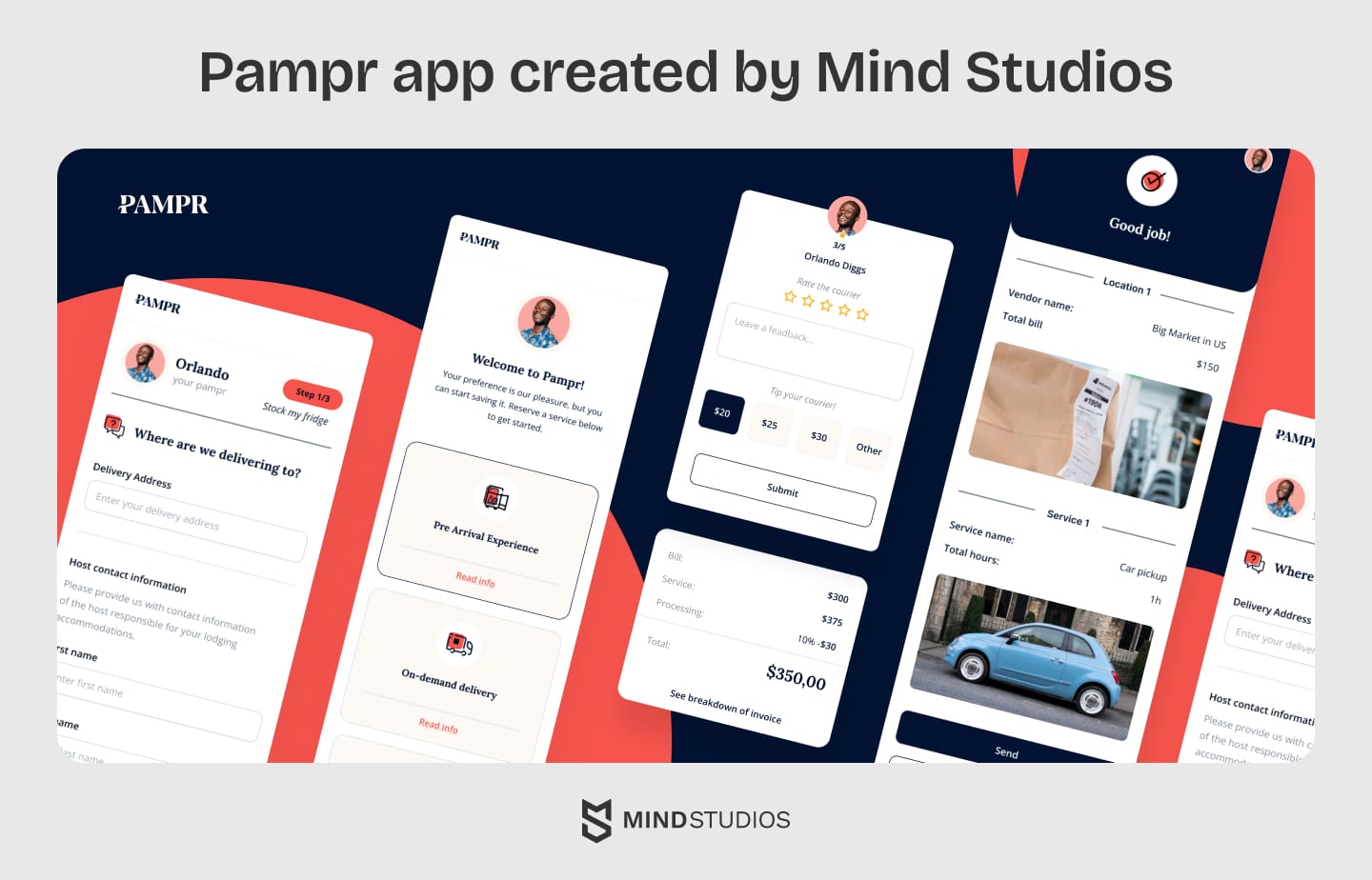
Challenges we encountered
During the development of the app we used Stripe, but we faced a significant challenge — our client had to manually track and distribute tips together with service fees, which was a long and inefficient process.
Solution
For this, we employed quite a creative approach. We used Stripe's abilities to fully automate the tipping process. We assigned a separate Stripe to each butler, allowing tips to be paid directly to them without going through Pampr’s general account. And voilà! The tips were received instantly and transparently. Just as expected.
Unight
Unight is an event platform that connects users with venues and allows them to receive discounts and bonuses.
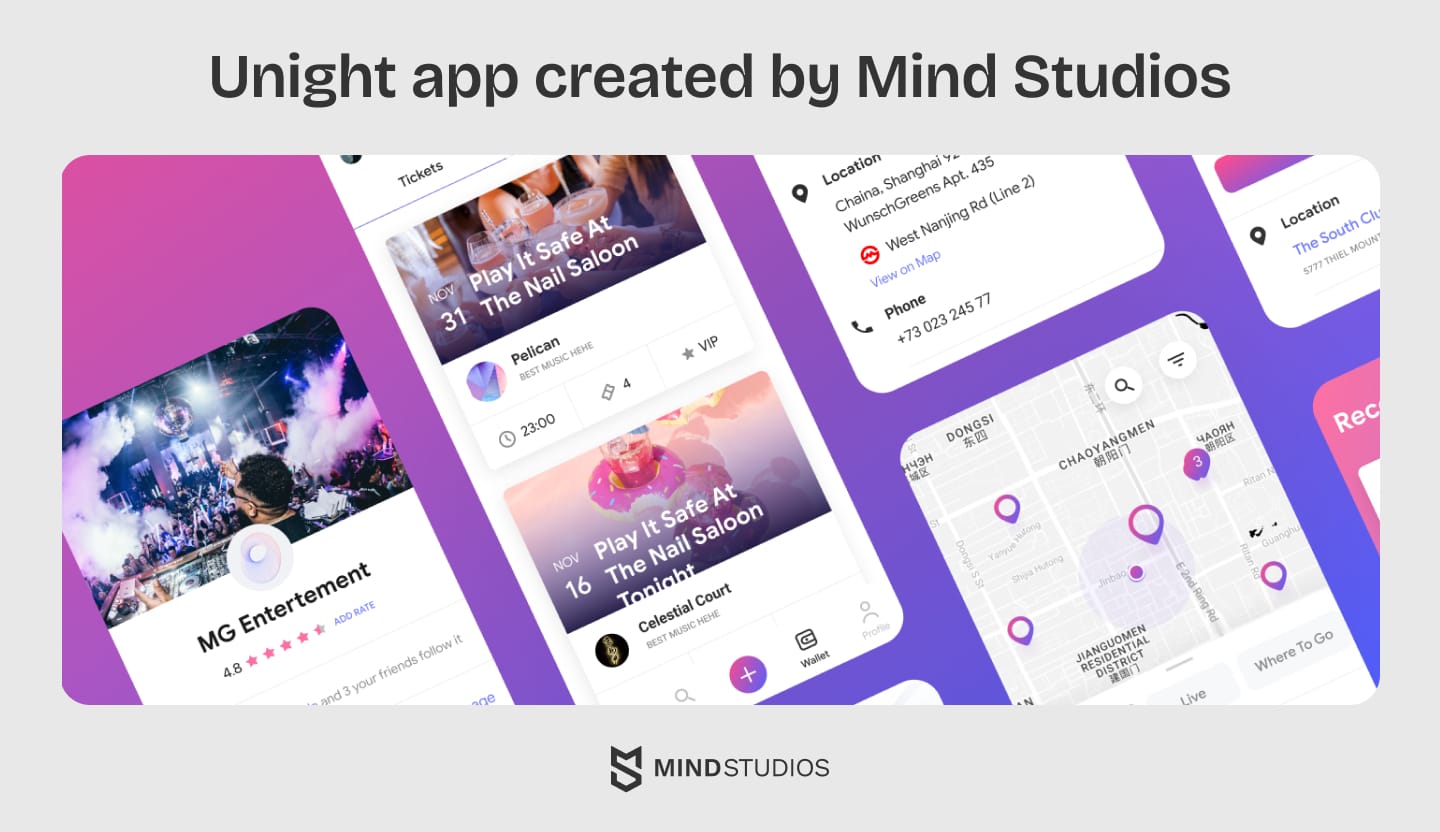
Challenges we encountered
This app was intended for the Chinese market, so we had to integrate it with local Chinese payment systems, which was quite complex due to the regional regulations.
Solution
To meet our client's requirements, we added optimal local PSPs, Alipay and WeChat Pay, using the Ping++ aggregator. Such an approach allowed us to ensure seamless payments for local Chinese users while also maintaining compliance with local regulations.
Summing up
We hope you found an insightful answer to “How to choose a payment gateway?” question in our article. Undoubtedly, this is a critical decision that may directly influence your revenue, user experience, as well as business scalability.
From our experience, PayPal and Stripe are often two go-to solutions, however, we’ve also encountered situations where integrating alternatives, such as WeChat Pay, Alipay, or hybrid approach offered the best result.
What we know for sure is that choosing a payment service provider is just a beginning. It’s equally important to ensure seamless integration and compliance with regional and tech standards. And that’s exactly where Mind Studios can help you.
Get in touch with us, and our specialists will guide you through selecting and integrating stages for your ideal payment solution to drive success to your project.


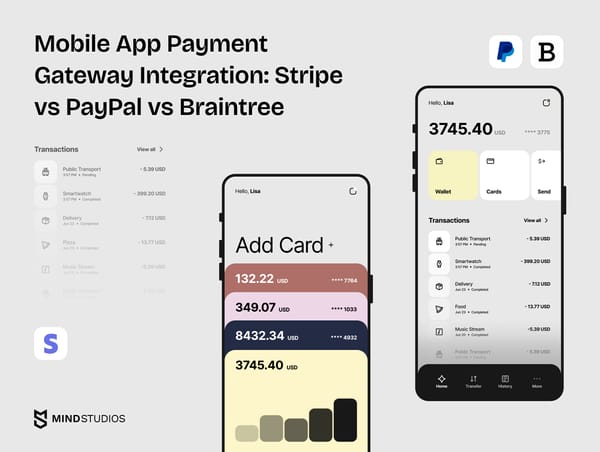
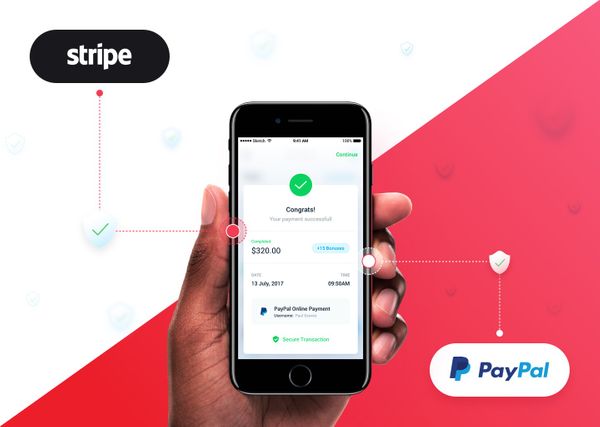
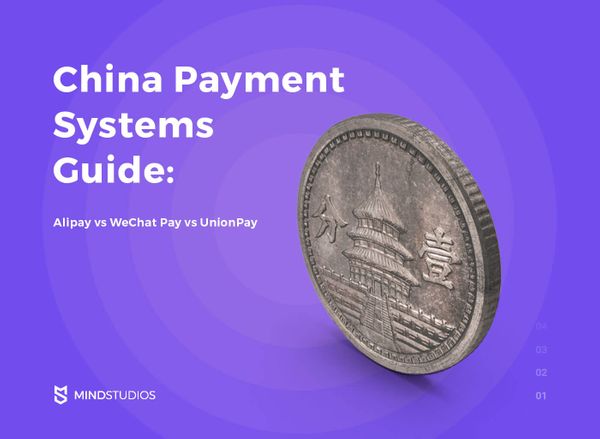
![How to Create an On-Demand Medicine Delivery App [Expert Guide]](https://themindstudios.com/blog/content/images/size/w600/2025/03/IMG-1-Cover-6.jpg)
